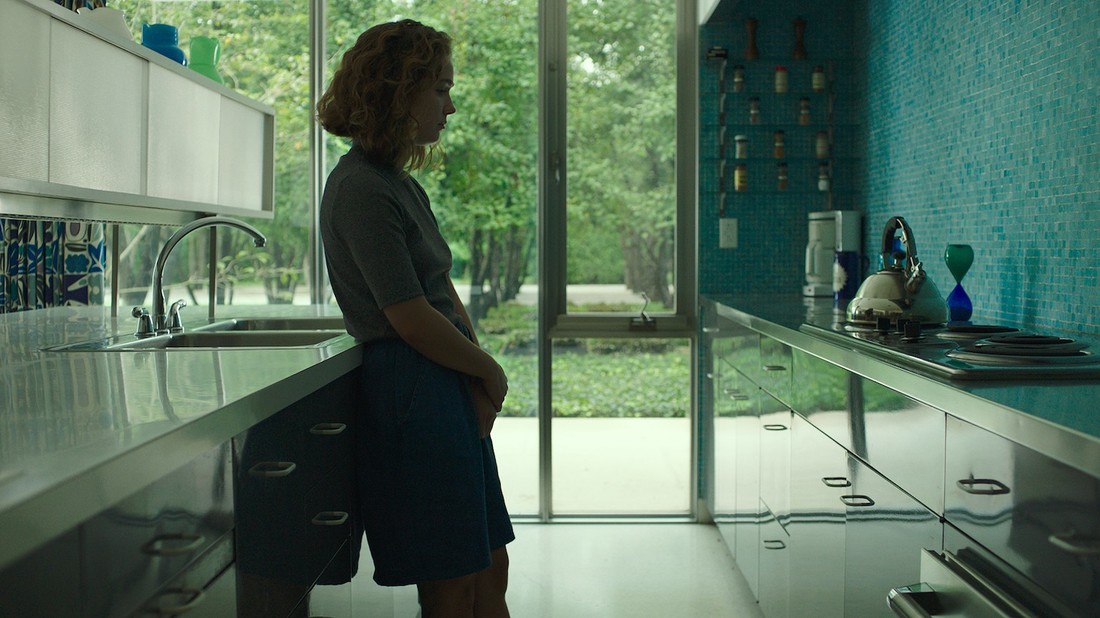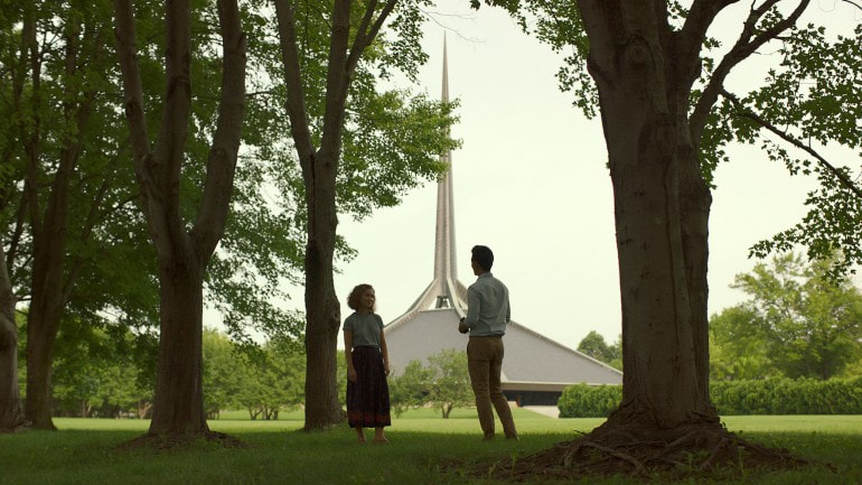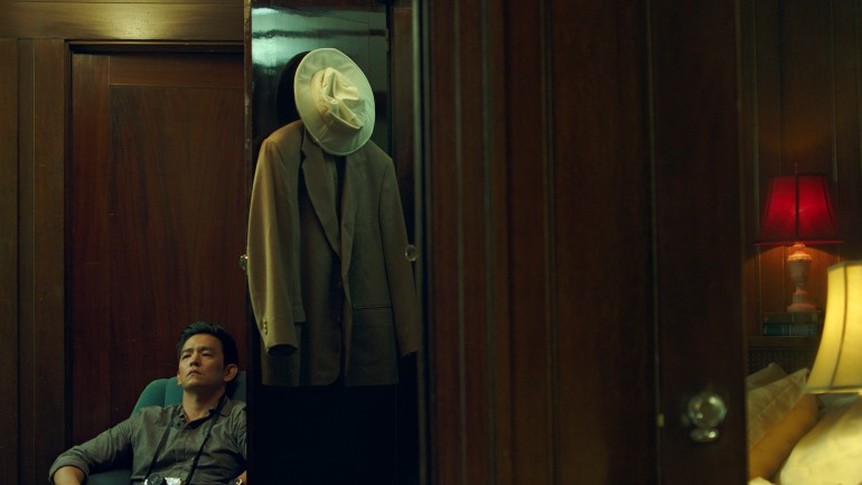 Kogonada's Columbus is a beautiful film. one about balance and symmetry, both figuratively and literally, a meticulously crafted piece of art thats technical prowess is only matched by its meditative evocation about the existential search for identity. Set in Columbus, Indiana, the story is centered around the unlikely friendship that develops between two strangers in Jin, a Korean-born man who arrived in Indiana to look after his architect father who has fallen in a coma, and Casey, a passionate young woman who was born and raised in Columbus, a character who has opted to care for her mother, a recovering addict, instead of pursuing her dreams in the field of architecture. With Columbus, Kogonada has crafted a stunning work of art, a film in which every composition feels meticulously designed, with heavy use of symmetrical framing that symbolically represents the film's thematic assertions about the need for balance and symmetry in life. The use of empty space throughout the film evokes the underlying emptiness each of these characters are struggling with visually, as both Jin and Casey struggle internally with finding the right balance between their personal aspirations and their social obligations. Early on, each of these character's stories feel like completely separate and singular narratives, with their convergence feeling completely organic, like fate brought each of these character's together. While this convergence of souls could easily have felt cheap or simplistic, Kogonada unfolds naturally, striking a good balance between philosophical and emotional resonance. While Jin has always struggled to escape the shadow of his father, a world-renowned architect, Casey has grown complacent at being by her mother's side, happy with her and her mother's relationship she fears that any change could upset the balance of their life, which has reached a good, healthy place. While both of these character's environments and upbringings couldn't be more different, they share the same struggles related to independence, identity, and self, each of which struggles mightily to find the right balance in life between their personal ambitions and desires, as well as their obligations to those they care about. While Jin's struggles are centered around the fractured relationship he shares with his father, one that has lead to resentment and eventually guilt, Casey is a character whose selflessness has restricted her own personal growth, unable to step out of the shadow of this small environment and experience what the larger world has to offer. Each character is burdened psychologically by their relationships with their parents, and the unexpected friendship that develops between these two helps push them both in the right direction, as they share their doubts, fears, and frustrations, each eventually helping the other reach a better place, finding some form of balance between individual aspirations and family obligations. In the end, Kogonada is a story about the absolutely necessity for balance and/or symmetry in life, telling the story of two characters who both have struggled to strike the right balance, each unable to find their sense of independence, which in turn has restricted them from finding solace, structure, and belief in themselves.
0 Comments
Leave a Reply. |
AuthorLove of all things cinema brought me here. Archives
June 2023
|



 RSS Feed
RSS Feed
